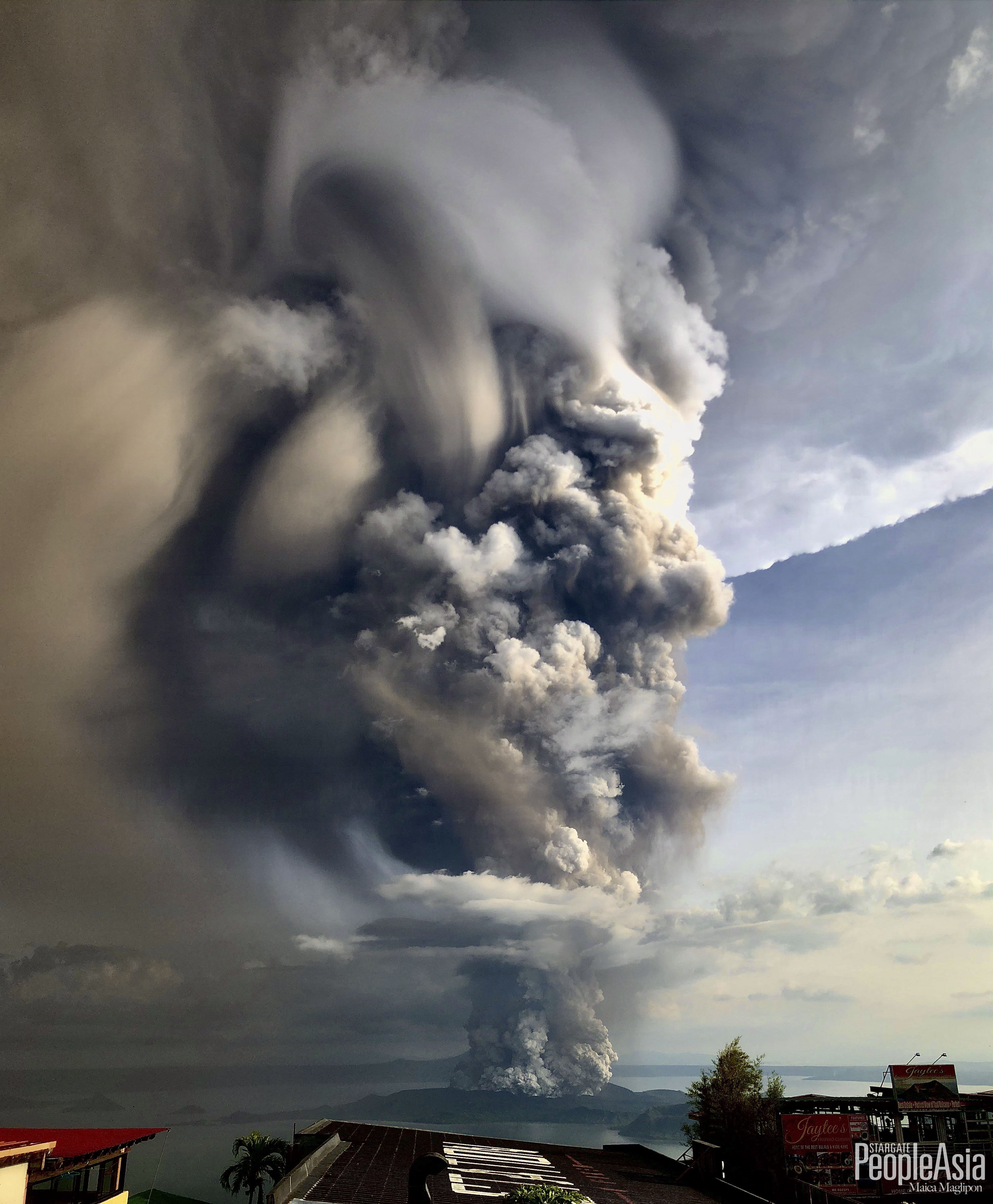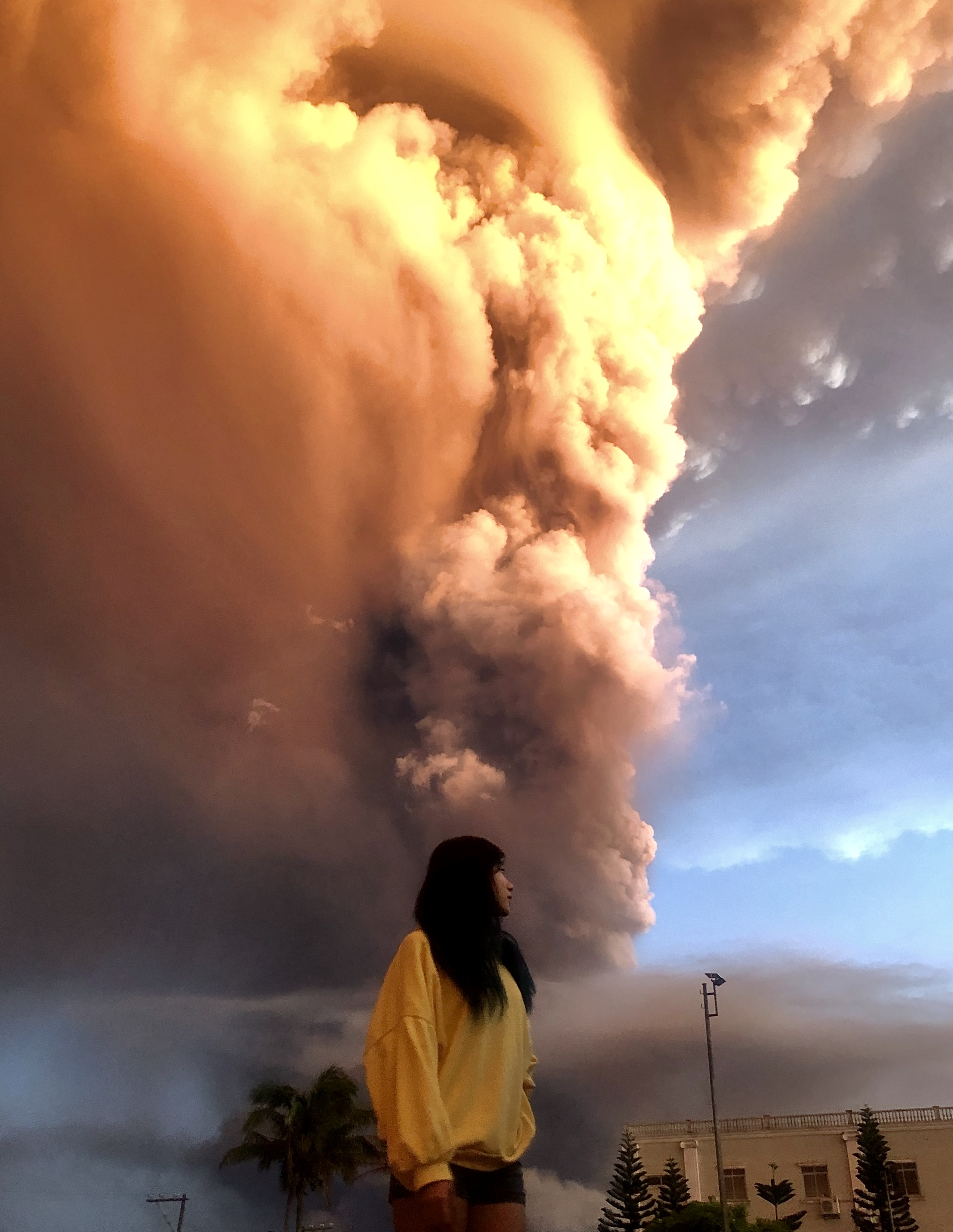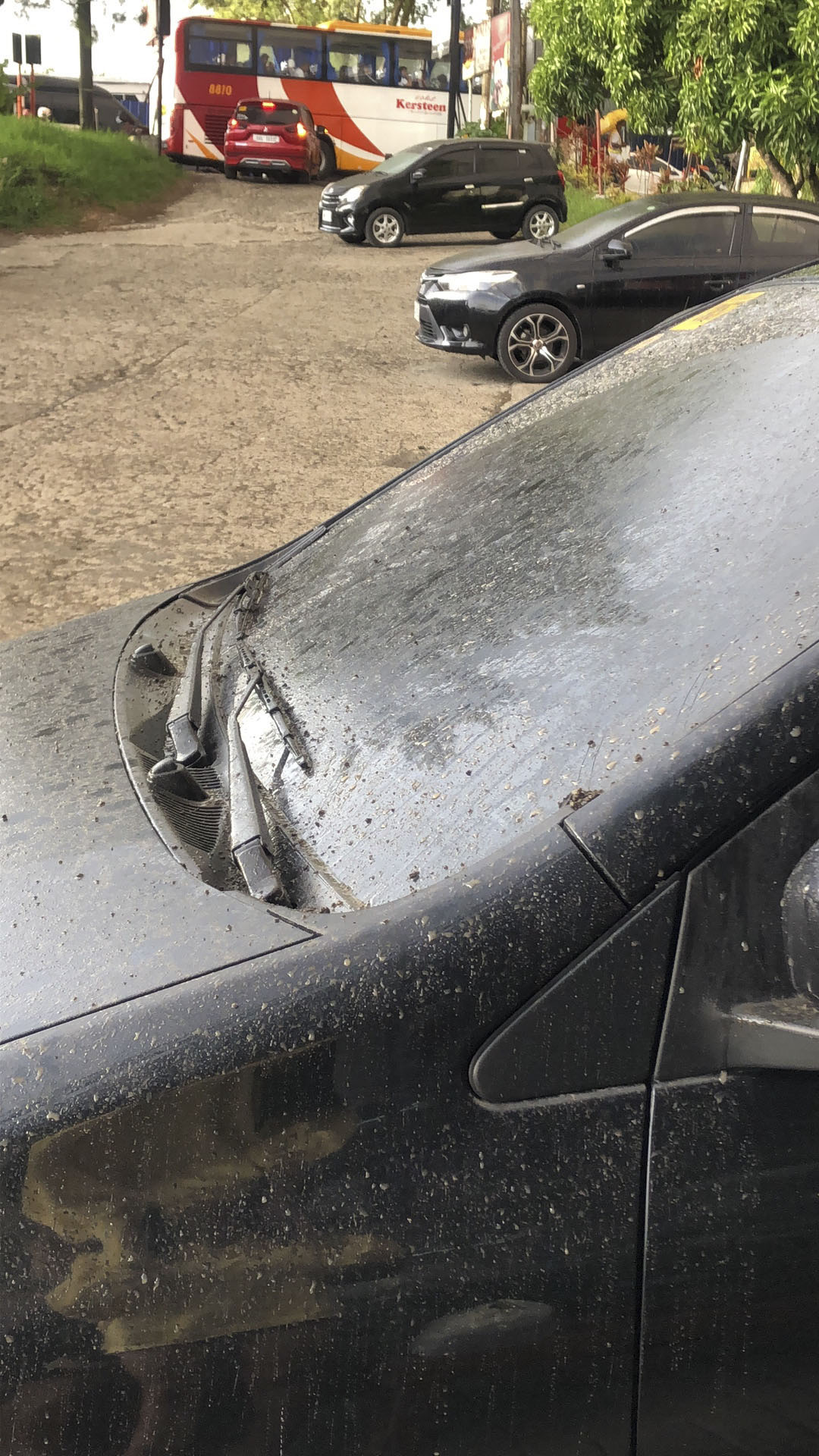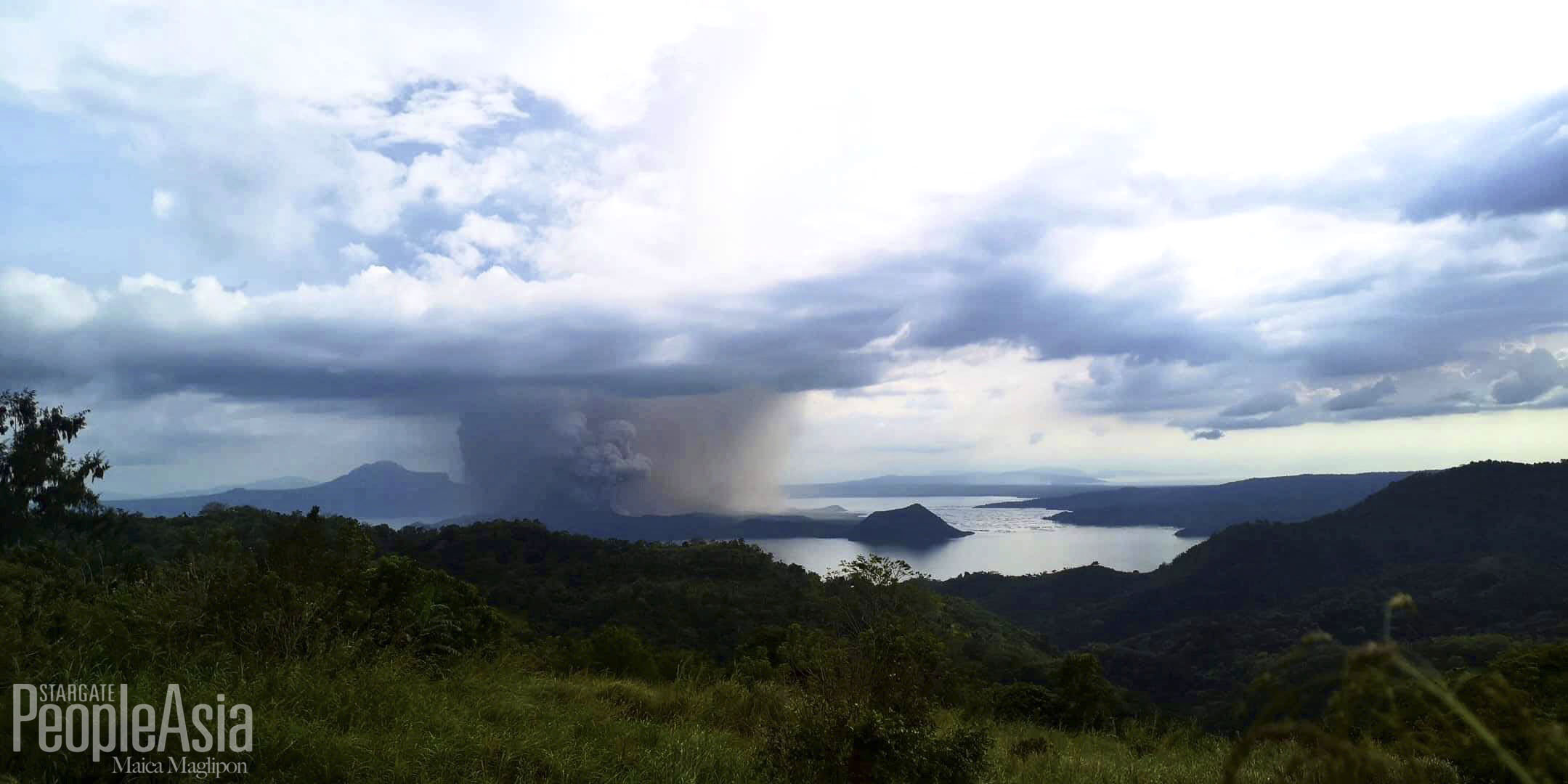Photos and Text By Maica Frances Maglipon
January 12, 2020: It was a typical Sunday morning. The family decided to take an out-of-town trip for some late lunch— and Tagaytay, the ever-reliable escape from the metro, was it.
The ride was unremarkable; the weather, clear and blue, slightly chilly even, prompting me to put on my sweater, as we made a pitstop at Good Shepherd. It had the makings of a perfect day for an excursion. But all wasn’t quite as perfect in the horizon. In a few moments, my family and I would take notice (as would the rest of the nation, soon after).
At around 2 p.m., a massive build-up of smoke caught my attention. We suddenly noticed people taking pictures, cars, and motorcycles parked on the side of the road. Without hesitation and out of curiosity, we stopped driving and rolled down our windows to see what was happening.
Some vendors told us that it was a massive fire. Some said that it was the volcano. I then decided to check on the news. In a few moments, I was able to confirm that PHIVOLCS, had, indeed, reported that the seemingly small but mighty Taal Volcano, whose last major eruption was 1977, was spewing ashes due to hydrothermal activity. Since it didn’t feel or look so alarming, we pushed on with our trip. Maybe it was just another Instagram moment. Who knew?
We even decided to have lunch in a restaurant that offered a view of the volcano. We saw no reason to panic. If anything, the smoke added drama and novelty to the backdrop that is Taal Lake. That was until we started hearing what we thought was thunder. Little did we know that it was already the volcano erupting. Forty-three years later, Taal Volcano was fully awake once more.

Since it was our first time to see the Taal Volcano this way, like many fellow diners in the restaurant, I took pictures and watched as ashes rose higher, forming big dark, gray clouds. This restaurant had a roof deck, and from inside I could hear the pitter patter of what sounded like rain. I decided to go out for an unobstructed view and photo. It was then when I realized that it wasn’t just raindrops making those sounds; it was from the small rocks falling from the sky. Together with the ashes, rocks started falling already. People were too amazed to panic.
When the rain stopped, we were already at the Mahogany Market. Everything seemed and felt normal again, save for the mud and wet ash that soiled our vehicle. We even managed to buy fruits and vegetables from the market.

And then, the smoke from the eruption started turning a bit orange and dark gray. We were so amazed by the look of this beautiful disaster that we decided to take pictures (again!). Even the staff and locals didn’t seem alarmed. Why should we? And then, we found out why — the hard way. By 6:11 p.m., the locals from the Mahogany Market informed us that we had to evacuate.
Some stalls started closing. We even heard one of the vendors saying that Silang, Cavite and other areas had to shut down power already. Ashfall started falling again, this time with a few small rocks mixed with the ashes. We then decided that we needed to get away from Tagaytay as soon as possible for our safety. I think everyone’s instinct was to go home and drive as far away as possible from the epicenter of it all.

On our way down, rain once again started to mix with the ashes, making it very difficult for us to drive. Since there were small stones falling from the sky, we could not use the wiper as it would damage the windshield. Darkness soon enveloped the skies; the smell of sulfur and other gases began to spread. The roads, starting rom the Sta.Rosa-Tagaytay Road, were almost at a standstill, making them virtual parking lots. Even Waze suggested the long route back to Manila, instead of taking SLEX. But even that alternative was jam-packed.
Perhaps due to panic, several motorists, despite the slow-moving traffic, encountered accidents on the road. Motorcycles, buses and private cars were involved. A few ambulance units were parked on the highway, making the traffic flow a bit slower. When we gassed up at around 7 p.m. at the Mendez Junction, the smoke from Taal was bigger and darker, more menacing than it was earlier in the day. The air was now pungent with scents reminiscent of a freshly exploded firecracker. Mixed with actual smoke, the heavy air made it harder for us to breathe.
Still, the kindness of friends, family (and even strangers) made it a little more bearable for us and the rest of the fleeing motorists. Restaurants offered clean water to wash away the ash and mud from our cars, especially the windshields. We got messages from friends and relatives asking if we were okay, telling us that even in in many parts of Cavite, Las Piñas, and Laguna, they were experiencing ash fall. They said that Taal Volcano’s eruption is all over the news.
I’m thankful that we got out of the Tagaytay area just in time, and up until now, I cannot imagine what could’ve happened if we left at a later time.

We arrive in Manila a little past midnight to discover that the alert level, from Level 1 earlier in the afternoon, had risen to Alert Level 4. PHIVOLCS advised that the volcano may have an explosive eruption within hours or days; and that tsunami warnings have been issued for those living around the lake. Residents within the 14-km. radius were also strongly advised to evacuate.
Even at home, ash was falling on our roof, the faint smell of Taal Volcano was in the air. With a prayer and a grateful heart, we thanked God that we were able to leave at the right time, and hoped that everyone else, did, too.






